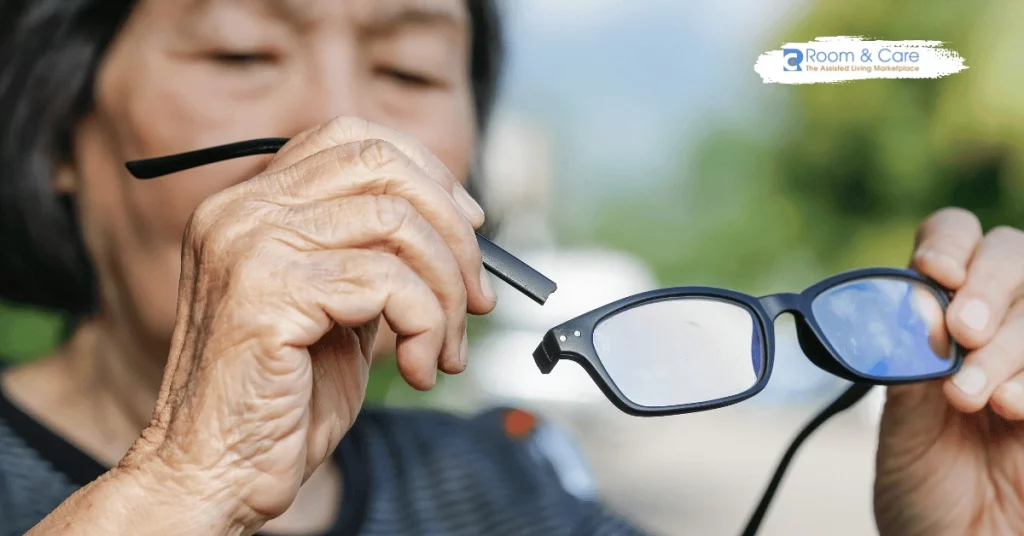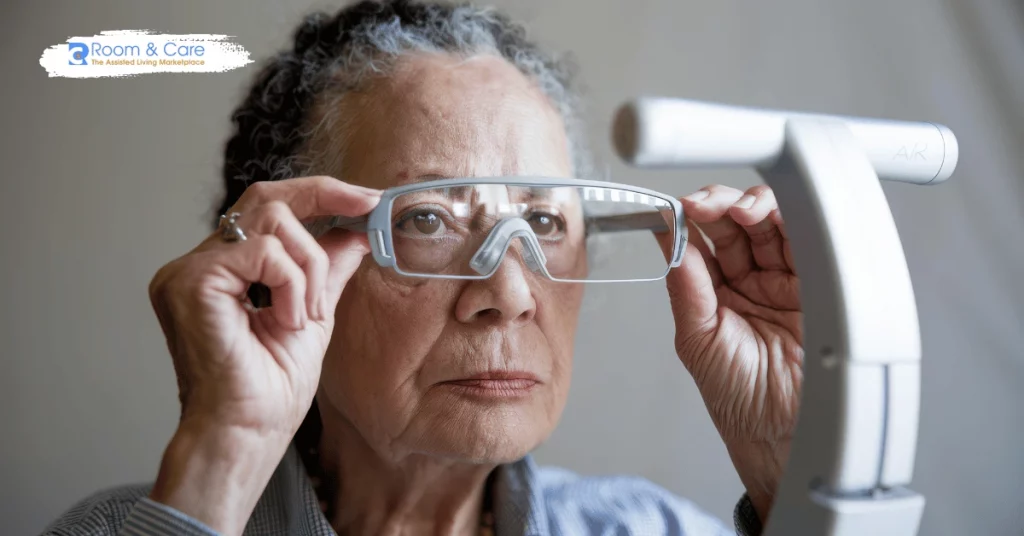

As seniors age, vision impairment can present unique challenges, affecting their ability to engage in daily activities and enjoy life to the fullest. However, there are countless enriching and enjoyable activities for vision impaired seniors that can help them stay active, social, and fulfilled. Whether they live independently or in a senior living community like a nursing home, adult family home, or assisted living facility, these activities can significantly enhance their quality of life. In this guide, we will explore various activities suitable for vision impaired seniors, offer practical tips for implementing them, and provide insights into creating an inclusive and engaging environment for everyone involved.
Engaging in activities is crucial for the well-being of all seniors, especially those with vision impairments. Research shows that staying active helps maintain cognitive function, physical health, and emotional well-being. For vision impaired seniors, these activities are even more essential as they help reduce feelings of isolation and depression, promote social interaction, and enhance a sense of purpose and self-worth. Finding the right activities can be a transformative experience, fostering connection, creativity, and joy.
When choosing activities for vision impaired seniors, consider the following factors to ensure they are safe, accessible, and enjoyable:
Degree of Vision Impairment: Different levels of vision impairment require different types of activities. Some may benefit from large-print or high-contrast materials, while others may prefer fully tactile or audio-based experiences.
Physical Abilities and Health Status: Assess each senior’s mobility and overall health. Some activities may require more physical exertion, while others can be done sitting down.
Personal Interests and Preferences: Understanding a senior’s hobbies, pastimes, and passions can help in selecting activities that are meaningful and engaging.
Available Resources: Consider the resources within the senior’s living environment, such as the presence of specialized equipment, trained staff, or community partnerships.
Music is a universal language that can deeply impact the emotional and mental well-being of seniors. For those with vision impairments, music and audio-based activities offer a rich avenue for engagement.
Listening to Music, Podcasts, and Audiobooks: Music and audiobooks provide entertainment and relaxation. Encourage seniors to listen to their favorite genres, participate in group listening sessions, or explore new podcasts on topics of interest. Audiobooks, especially, can bring stories to life in a way that is accessible to those with visual impairments.
Music Therapy: Music therapy sessions led by certified therapists can be incredibly therapeutic. Studies indicate that music therapy can help reduce anxiety, improve mood, and stimulate memory recall. These sessions can be individual or group-based, depending on the senior’s preferences.
Singing and Instrument Playing: Singing is an excellent activity that does not require sight and can be enjoyed by anyone. Playing instruments such as drums or tambourines can offer rhythmic enjoyment and physical movement. Many assisted living facilities host regular sing-along sessions or even music classes to keep residents engaged.
Physical activities are important for maintaining overall health, enhancing mobility, and boosting mood. For vision impaired seniors, modified and supervised exercises can be both safe and beneficial.
Chair Exercises and Tai Chi: Low-impact chair exercises or tai chi movements can improve flexibility, strength, and coordination. These exercises are easily adapted for various levels of vision impairment and can be done in groups or individually. In many senior living communities, fitness instructors are trained to guide these activities with a focus on tactile and auditory cues.
Walking Groups: Walking is one of the simplest and most effective exercises. Organize walking groups in safe, familiar areas such as indoor tracks or well-maintained paths. Using tactile markers or walking aids can make these activities safer and more enjoyable. Some assisted living facilities have guided walking groups to promote physical health and social interaction.
Tactile and Adaptive Sports: Engaging in tactile sports like bocce ball, goalball, or adaptive bowling can be a fun way to promote teamwork and physical activity. These sports are designed with modifications that make them accessible to those with vision impairments. They also offer a great way to socialize and stay active.
Creative expression through arts and crafts can provide a sense of accomplishment and joy for seniors with vision impairments. Tactile activities are particularly beneficial as they rely on the sense of touch and creativity.
Sculpting and Clay Modeling: Working with clay or other tactile materials can be soothing and therapeutic. It allows seniors to create shapes and forms they can feel with their hands, stimulating their imagination and creativity. Many communities provide guided art sessions tailored to the needs of vision impaired seniors.
Knitting, Crocheting, and Weaving: These textile arts are perfect for those with limited vision, as they rely more on touch and less on sight. With some initial guidance, seniors can enjoy these crafts for hours, creating beautiful items and staying mentally engaged.
Gardening and Sensory Gardens: Gardening is an excellent activity for seniors, providing physical exercise and sensory stimulation. Sensory gardens are specifically designed to engage all senses, featuring plants with unique textures, smells, and sounds. Many assisted living facilities offer raised garden beds and tactile gardening tools to make gardening accessible to all residents.
Technology offers a wealth of opportunities for vision impaired seniors to stay connected, entertained, and engaged. Modern devices and apps have made it easier than ever for seniors to access content and participate in activities.
Screen Readers and Voice Assistants: Devices like Amazon Echo, Google Home, or screen readers on smartphones and computers enable seniors to access information, play music, set reminders, or even control smart home devices. These tools offer convenience and independence, allowing seniors to engage with their surroundings more effectively.
Accessible Games and Apps: Many games and applications are designed with accessibility features like voice commands, audio descriptions, and tactile feedback. These can range from simple puzzles to more complex strategy games that stimulate the mind and provide hours of entertainment.
Virtual Reality (VR) Experiences: Some senior communities use VR to provide immersive experiences for their residents, such as virtual travel, museum tours, or nature walks. VR sessions tailored for the vision impaired often focus on audio-rich environments, using soundscapes to create a fully immersive experience.
Social engagement is vital for mental and emotional health. Group activities help vision impaired seniors build relationships, share experiences, and maintain a sense of belonging.
Support Groups and Discussion Circles: Organize support groups or discussion circles where seniors can talk about their experiences, share advice, and support each other. This can be a powerful way to combat feelings of isolation and build a sense of community.
Games and Puzzles: Games like braille bingo, tactile card games, or specially designed board games for the vision impaired can be entertaining and mentally stimulating. Hosting regular game nights can help create a lively social atmosphere in senior living communities.
Storytelling and Oral History Projects: Encourage seniors to share stories from their lives, which can be a deeply rewarding experience. Recording these stories can create a valuable oral history for families and communities, fostering intergenerational connections.

When planning activities for vision impaired seniors in nursing homes, adult family homes, or assisted living facilities, it’s important to consider the following:
Safety Considerations: Prioritize activities that are safe and manageable for participants. Eliminate potential hazards, provide clear verbal instructions, and ensure supervision when necessary.
Accessibility Features: Ensure that activities are designed to be accessible to all residents, regardless of their level of vision impairment. This may involve using tactile markers, large print materials, or voice-activated devices.
Inclusive Practices: Activities should be inclusive, encouraging participation from all residents. Consider various ability levels when selecting or adapting activities, and offer a range of options to accommodate different preferences.
Trained Staff: Having staff trained to work with vision impaired seniors can greatly enhance the quality and safety of activities. They can provide assistance, adapt activities to meet specific needs, and ensure all participants feel comfortable and engaged.
Encourage Active Participation: Create an inviting atmosphere where seniors feel encouraged to try new activities. Use positive reinforcement and provide a variety of options to cater to different interests.
Leverage Community Resources: Utilize local organizations, volunteers, or partnerships with schools and community groups to bring fresh ideas and energy to activities. Many organizations offer resources and training specifically designed for working with vision impaired individuals.
Adapt the Environment: Modify spaces to be more accessible, such as using tactile markers or audio guides. Create a welcoming environment where seniors feel comfortable and confident participating.
Provide Clear Communication: Use simple, clear language when explaining activities. Combine verbal instructions with tactile demonstrations to ensure everyone understands the task.
Celebrate Achievements: Recognize and celebrate the efforts and achievements of all participants, whether they have mastered a new skill, joined in a group activity, or simply had fun. Positive feedback boosts confidence and encourages continued participation.
Q: What kinds of activities are suitable for seniors with severe vision impairment?
A: Activities such as music therapy, tactile arts (like clay modeling), chair exercises, sensory gardening, and audio books are great options. These activities are designed to be accessible and enjoyable regardless of vision levels.
Q: How can I ensure my loved one stays safe while engaging in activities?
A: Choose activities that are safe and provide appropriate supervision. Use tactile guides, clear instructions, and consider adaptive equipment when necessary. In a senior living community, ensure staff members are trained to assist visually impaired seniors.
Q: Are there any outdoor activities that are suitable for vision impaired seniors?
A: Yes, there are many outdoor activities such as walking in enclosed or familiar areas, gardening in a sensory garden, or participating in outdoor musical sessions. Make sure the outdoor environment is safe, with clear paths and tactile markers.
Q: How can technology help vision impaired seniors stay engaged?
A: Technology such as screen readers, accessible games, voice-controlled devices, and VR experiences can provide endless opportunities for engagement, entertainment, and learning.
Q: What are some community resources for organizing activities for vision impaired seniors?
A: Local organizations like the American Foundation for the Blind, senior centers, libraries, and community groups often provide resources, training, and support for organizing activities. Many senior living communities also offer specialized programs and events.

Activities play a crucial role in enhancing the lives of vision impaired seniors, helping them stay active, social, and engaged. By carefully selecting activities that are accessible, safe, and enjoyable, families and caregivers can ensure a higher quality of life for their loved ones. Whether living independently or in a senior living community, these activities provide valuable opportunities for connection, creativity, and personal growth.
At Room and Care, we understand the unique needs of vision impaired seniors and are committed to helping you find the best living options for your loved one. Our platform connects you directly to a wide range of assisted living facilities, adult family homes, memory care facilities, nursing homes, and independent living communities—all without any referral fees or middlemen. This ensures affordable, personalized care that meets your needs.
By embracing the right activities and making thoughtful decisions, you can create a nurturing environment that fosters joy, fulfillment, and a sense of belonging for vision impaired seniors.